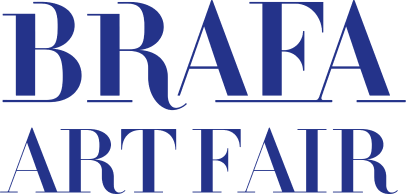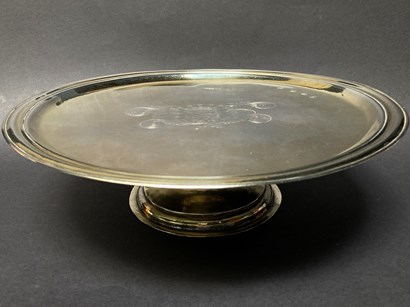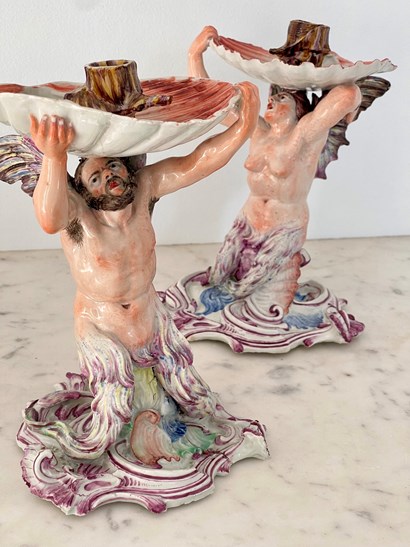This section will be available this Autumn.
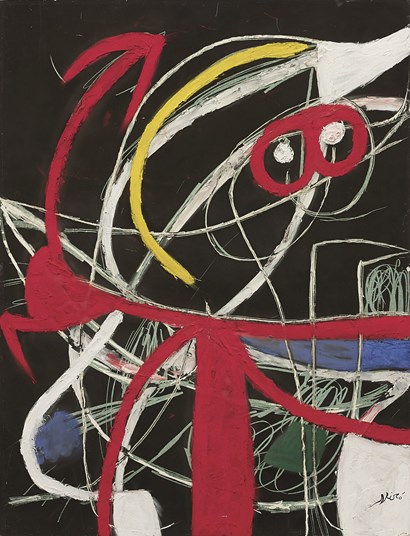
Galerie de la Béraudière
joan miró
Joan Miró (Barcelona 1893-1983 Palma de Majorque) Femme, oiseaux, 1976 Oil, gouache and oil stick on scratched board 65.1 x 50.2 cm Signed lower right 'Miró' Signed, dated and titled on the reverse: MIRÓ., 20/IV/76., Femme, oiseaux Provenance: estate of Joan Miró; Sotheby's, Madrid, 42 works by Joan Miró, 9 December 1986, lot 4 (in aid of the Fundaciò Pilar i Joan Miró, Palma de Mallorca); Quitana Fine Arts, New York; Ramis Barquet Gallery, Mexico City; private collection; Christie's, New York, 9 November 2000, lot 460; Waddington Galleries, London; private collection, Portugal (acquired from the above in 2004); Phillips, New York, 8 November 2015, lot 14; private collection, Europe Literature: Jacques Dupin, Ariane Lelong, Joan Miró, Catalogue raisonné. Paintings, vol. VI: 1976-1981, Paris, Gallery Lelong and the Miró Succession, 2004, ill. n° 1737, p. 49 Exhibitions: 2018, Brussels, Galerie de la Béraudière, Calder, Miró et leurs rencontres parisiennes; 2017, Brussels, Galerie de la Béraudière, La figure animalière; 2016, Brussels, Galerie de la Béraudière, Chefs-d'oeuvre de la galerie et Surréalisme In Woman, Birds, Joan Miró unfolds a free and vibrant universe, where colour and line become forces in motion. Against a deep black background, reds, yellows and whites burst forth with an almost musical intensity. The artist condenses the essence of his language into this work: the spontaneity of gesture, the simplicity of form and the poetry of symbolism. The woman and the bird, emblematic motifs in his work, merge into a space that is both controlled and spontaneous. Created at the end of his life, this composition expresses the supreme freedom of an artist at the height of his powers.

Galerie Perrin
walter sauer
Walter Sauer (Brussels 1889-1927 Algiers) Pensive woman, circa 1925 Mixed media 78.5 x 61.3 cm Signed upper left 'WS Walter Sauer' Provenance: private collection A unique, elegant style characterises the art of Walter Sauer, an artist who, in his short lifetime, lit up the Belgian art scene in the first twenty years of the twentieth century. Sauer's hand has a sensitivity to form that is characteristic of decorators; reality, in his eyes, is stripped of that which is superfluous, showing the noble essence of form. This essentiality, combined with an absolutely personal technique, makes Sauer's works instantly recognisable. The figure of the woman is the leitmotif of the artist, who combines his vision of the model with a series of cultural references ranging from Japanese art to Western tradition.
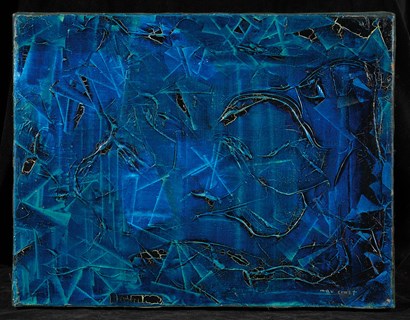
Beck & Eggeling International Fine Art
max ernst
Max Ernst (Brühl 1891-1976 Paris) Un Caprice de Neptune, 1959 Oil on canvas 27 x 35 cm Signed lower right 'max ernst' Provenance: Paolo Marinotti; Lawrence Rubin Greenberg Van Doren Fine Art, New York; private collection, Germany Literature: W. Spies, S. and G. Metgen: Max Ernst. Oeuvre-Katalog, Werke 1954-1963, Cologne, 1998, p. 194, n° 3425 (ill.) Exhibitions: 1961, June-July, Paris, Max Ernst sculptés, Galerie au Pont des Art Weill; 1966, 17 June-2 October, Venice, Max Ernst, Oltre la pittura, Palazzo Grassi, cat. n° 7 (ill.); 1979, Munich, Max Ernst, Retrospektiv, Haus der Kunst, cat. n° 296, ill. III (colour ill. n° 30, ill. 331)
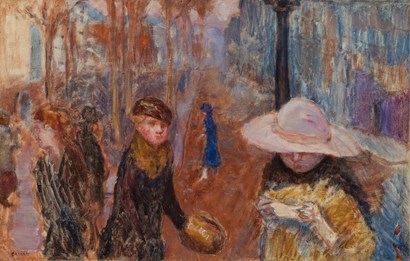
Galerie Alexis Pentcheff
pierre bonnard
Pierre Bonnard (Fontenay-aux-Roses 1867-1947 Le Cannet) Promenade à Paris, circa 1911 Oil on canvas 40 x 60 cm Estate stamp lower left Provenance: collection of Pierre and Marie-Françoise Vernon Literature: Dauberville Jean et Henry, Bonnard, Vol. IV, Paris, Bernheim-Jeune, 1974, repr. p. 312 under n° 01992 Exhibitions: Pierre Bonnard, A. Tooth & Sons, London, 17 June-12 July 1969, repr. in exh. cat. n° 8; Matisse e Bonnard. Viva la pittura!, Rome, 2006, repr. in exh. cat. (ed. Skira) p. 340 under n° 125; Bonnard, Le Cannet, une évidence, Musée Bonnard, Le Cannet, 2020, repr. in exh. cat. p. 42 The creation of this work by Pierre Bonnard reminds us that the artist was also a photographer, experimenting with daring compositions. Though his painting captures the fleeting moment, it shares little with the tentative realism of early photography. Made entirely of color and sensation, it constructs a fragile world of subtle harmony. Just before embracing the South - before letting the Mediterranean light burst into color across his canvases - Bonnard explored a quieter, more muted sensuality in the early 1910s, while working in a studio in Paris, not far from the avenue depicted here. The “very Japanese Nabi,” as his friends from the group of his youth liked to call him, knew how to let color whisper on the canvas, how to conjure the intimacy of a letter. On one side of the painting, cool tones — blues and violets placed side by side - contrast with the russet hues of this autumnal Parisian avenue, bringing to the foreground, beneath a hat bathed in light like a reinvented halo, the lowered face of a woman reading. Her eyes are hidden, absorbed in the text. Though she has removed her gloves, she surely no longer feels the sharp chill of that November afternoon… Elegant silhouettes glide through the landscape; yet they endure — along with this hat-wearing heroine - on our retinas and in our memories, as companions to a shared intimacy, lasting only the time it takes to read a love letter. Unseen on the art market since the 1960s, this painting has been shown in several museum exhibitions, the most recent in 2020 at the Musée du Cannet, dedicated to the artist.
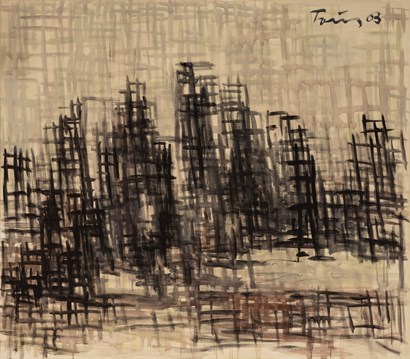
Patrick Derom Gallery
günther förg
Günther Förg (Füssen 1952-2013 Freiburg) Untitled, 2003 Acrylic on canvas 140.5 x 160.5 cm Signed and dated upper right ‘Förg 03’ This work is registered in the archives of the Günther Förg Estate under number WVF.03.B.0242 Provenance: Alcalá Subastas, Madrid, 12 May 2011; private collection, Madrid; private collection; sale Christie’s Amsterdam, 8 April 2014, lot n° 74; private collection, Belgium Exhibition: 2003-2004, Galerie Heinrich Ehrhardt, Madrid, 18 November 2003-30 January 2004, Günther Förg

Herwig Simons Fine Arts
Wooden chef-d'oeuvre of the Compagnonnage France, 19th century Walnut, maple and mohogany wood H 185 cm Provenance: former private collection, France A fine, rare and large nineteenth-century wooden exhibition model, the chef d'oeuvre of a master carpenter of the Compagnonnage. These models were made to show the technical expertise and skill of the master carpenter. The Compagnonnage is an old French guild with roots in the 12th century. In the eighteenth century, they incorporated symbols and rituals, many of which were borrowed from Freemasonry to create an initiatory progression for its members.
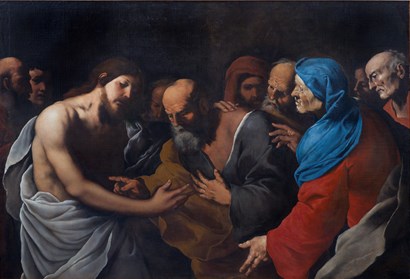
Hartford Fine Art - Lampronti Gallery
Francesco Fracanzano (Monopoli 1612-1656 Naples) The incredulity of Saint Thomas Oil on canvas 143 x 205 cm Literature: R. Causa, La pittura del Seicento a Napoli. Dal naturalismo al barocco, Naples, 1972, S. 976, n° 74; G. De Vito, Fracanziano’s periphrasis in XVII century Neapolitan studies, 2003/2004, pp. 104-105, fig. 2; N. Spinosa, XVII c. paintings in Naples, from Caravaggio to Massimo Stanzione, Naples 2010, p. 281 cat. n° 212; A. Della Ragione, Francesco Fracanzano, 2011, p. 10, fig. 23; N. Spinosa, Da Artemisia a Hackert. La collezione di un antiquario, exh. cat., Reggia di Caserta, Foligno 2019, cat. 9, pp. 18-19; N. Spinosa, Il Maestro degli Annunci ai pastori e i pittori del 'tremendo impasto' (Napoli 1625-1650), Rome 2021, cat. C5, p. 193 (quoting further literature: Cairo, 2011, pp. 203-210. Forgione, p. 233, fig. 12) Exhibition: Da Artemisia a Hackert. La collezione di un antiquario, Reggia di Caserta, 2019-2020

Van Pruissen Asian Art
yoshitsugu
Hattori Taira Yoshitsugu Yagami School Tsuba with 'Thousand Monkeys' Carved iron Japan, late 18th century Ø 7.1 cm Signed 'Yoshitsugu' An iron tsuba intricately carved in openwork (nikubori ji-sukashi) with a lively multitude of monkeys, including the famous Three Wise Monkeys. Their eyes and the rim are accented in gold using nunome-zōgan. The maker, Hattori Taira Yoshitsugu, was a pupil of Yagami school founder Noda Mitsuhiro and teacher of Onitake Toshiyoshi. The Yagami school, active in Nagasaki in the late 18th century, is renowned for its 'Thousand Monkeys' motif, as also seen in a comparable example in the Metropolitan Museum of Art (inv. n° 91.1.751).
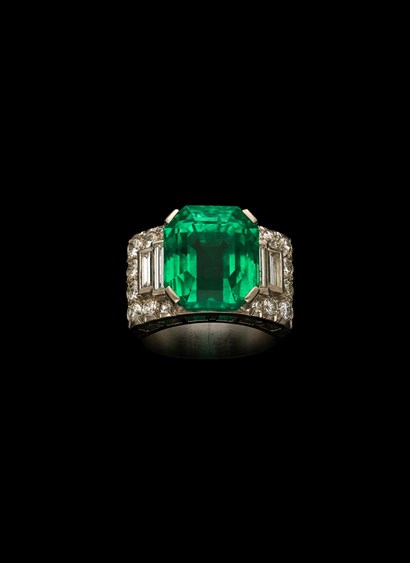
Pauline's Jewellery Box
Art Deco emerald & diamond ring, circa 1920-1930 Platinum, emerald and diamond Provenance: New York collection An Art Deco emerald & diamond ring, set with a step cut Colombian emerald weighing 10.87 carats flanked by baguette shaped & old mine cut diamonds. The emerald has a deep colour and is minor oil. Estimated total diamond weight is approximately 1.55 carats. Estimated colour E-G on average. Estimated clarity VVS-VS on average. The diamonds are bright & lively. Mounted in platinum. Accompanied by a SSEF certificate for the emerald.
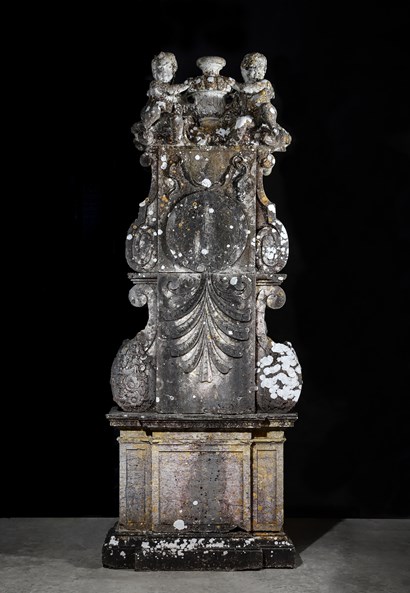
Vagabond Antiques
Monumental carved marble Sundial Portugal, Oporto region, mid-18th century H 357 x W 130 x D 62 cm Portugal has a rich tradition of country houses and manors indigenously known as solares or quintas. Some were modelled on the great 18th century gardens of Le Notre and other landscape architects in France. Under King João, himself a great patron of the arts, began the great 18th century period of Portuguese baroque. The previous austere architectural style, albeit heavily influenced by Renaissance Italy, was replaced with exuberance. With great profits from its colonies and especially gold and precious stones from Minas Gerais and the Sertão of São Paulo in Brazil, it was the golden era of Portuguese architecture and ornament. From it there emerged a new artistic language. Named the Joanine, in honour of the King, it was an architectural style that transformed quintas not only in Portugal but also in the nation’s Atlantic provinces and overseas colonies. This spectacular sundial, monumental in scale, incorporates many architectural elements synonymous with the baroque architecture of the mid-18th century. It was a highly creative Italian who created a form of this style of architecture perfectly suited to Northern Portugal. Born in 1691 and trained in Sienna, Nicolau Nasoni arrived in Oporto in 1725. Having established his reputation by modernising the city’s cathedral, he was commissioned by Jeronimo de Tavora e Noronha to build the Church of Clerigos, one of Oporto’s great 18th century churches. Commissions for other churches and quintas followed, the most famous of which being the grand solar de Mateus, known all over the world for the rose wine that bears its name. The architectural composition of this sundial probably owes more to the façade of the Cas dos Porto Carreiro. Similar works was commissioned by Antonio de Vasconcelos Carvalho e Menezes, a wealthy Portuguese noble who made part of his wealth in Brazil, it was constructed by a Spanish architect but heavily influenced by Nasoni’s work. The volute scrolls and the foliate elements as well as the stylised lambrequins all echo Nasoni’s designs for the gilt woodwork of Oporto churches.

Galerie Cento Anni
andré lanskoy
André Lanskoy (Moscow 1903-1976 Paris) Un cas suspect, 1964 Oil on canvas 97 x 146 cm Signed and dated 'Lanskoy 64' Provenance: Galerie de Seine; private collection, Paris Certificate of authenticity from the Comité Lanskoy dated 4 April 2025 This work will be included in the forthcoming catalogue raisonné currently in preparation
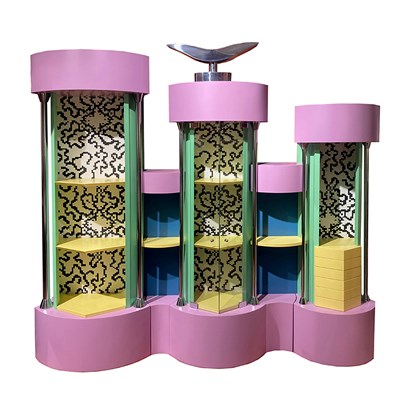
robertaebasta
Alessandro Mendini (Milan, 1931-2019) 'Libreria scultura' prototype of modular bookcase/display for Swatch, Italy 1994 Lacquered wood, coloured, laminated, chromed and satin steel H 214 x W 250 x D 40 cm Unique piece Certificate of authenticity by Mrs Elisa Mendini and Mrs Fulvia Mendini Provenance: private collection, Italy
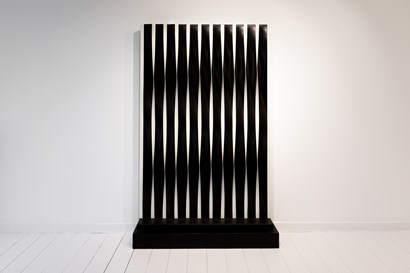
Edouard Simoens Gallery
walter leblanc
Walter Leblanc (Antwerp 1932-1986 Silly) Torsions, 1977-1978 Black and white enamelled steel sculpture 200 x 130 cm Provenance: Walter & Nicole Leblanc Foundation; private collection; André Simoens Collection Literature: Linea Catalogue raisonné, 1997, Ludion, Brussels, CR 1271, p. 282 Exhibitions: Brussels, Tecno, Walter Leblanc Integratie, 1983; Gent, Floraliapaleis, Linea ’83, 1983

Galeria Bessa Pereira
Sergio Rodrigues (Rio de Janeiro, 1927–2014) 'Kilin' chair, 1970s Solid wood, leather H 68 x W 68 x D 68 cm Origin: Brasil Provenance: private collection, Rio de Janeiro; Galeria Bessa Pereira collection Literature: Vicente, A., & Vasconcellos, M. (Comps.), Móvel moderno brasileiro (1st edition), São Paulo: Olhares, 2017, p. 302; Cals, S, Sergio Rodrigues, Rio de Janeiro: Icatu, 2000, p. 142
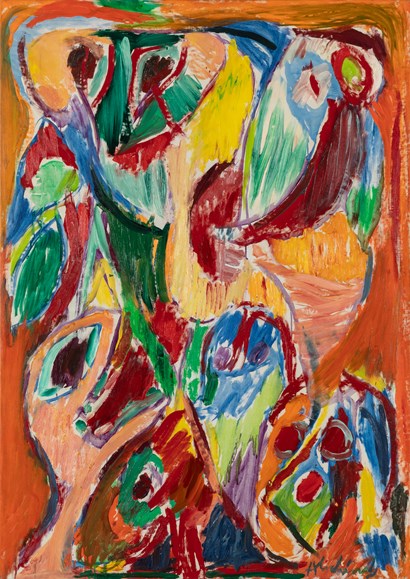
Harold t’Kint de Roodenbeke
pierre alechinsky
Pierre Alechinsky (Brussels, 1927) Le Nid, 1965 Oil on canvas 130 x 91 cm Signed lower right Signed and titled on reverse Certificate of authenticity by Pierre Alechinsky dated 14 March 1995 Provenance: Lefebre Gallery, New York; private collection, Monaco

Victor Werner
thierry van ryswyck
Thierry Van Ryswyck (Antwerp 1911-1958 Vallauris, France) Walking panther, 1929 Patinated plaster H 53 x W 133.5 cm x D 23 cm Name and address of the mould maker inscribed on the underside of the base: A. Hoefnagels, mouleur, Quai Cockerill 19, Anvers Signed and dated Th. Van Ryswyck 1929 Provenance: private collection
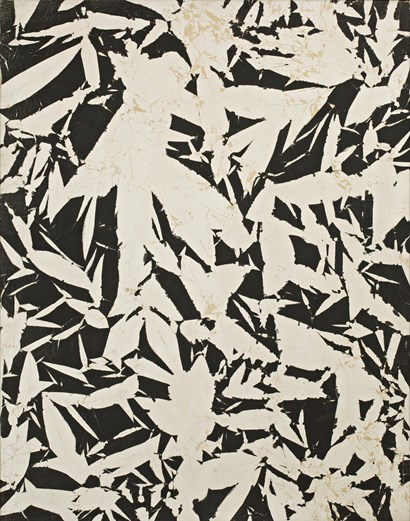
Galerie Berès
simon hantai
Simon Hantai (Hungary, Bia 1922-2008 Paris, France) Étude en noir et blanc pour Pierre Reverdy, circa 1969 Oil on canvas 96 x 75.5 cm Certificate of authenticity n° 2024-16 from the archives Simon Hantai on October 12th, 2024 Provenance: gifted by the artist to Peter Stuyvesant Foundation in 1969 Exhibition: Tilburg, Kultureel Centrum, Peter Stuyvesant collectie, 1979

